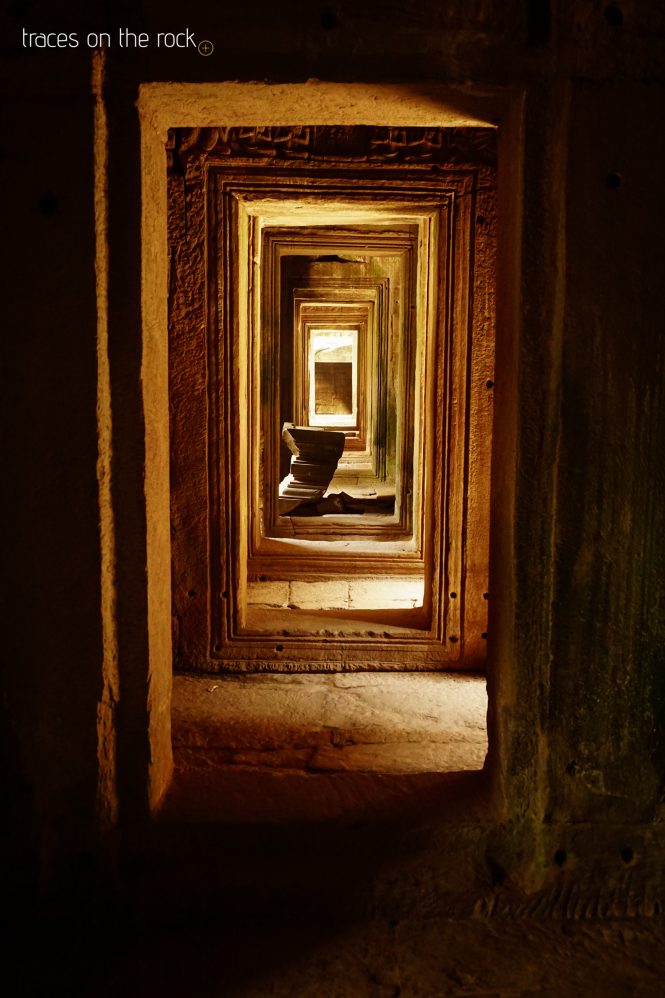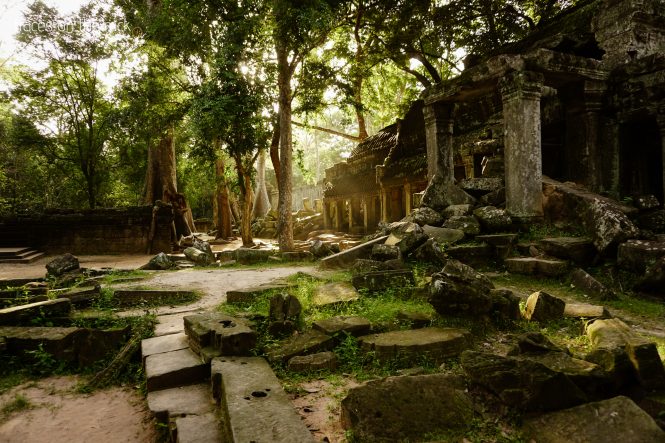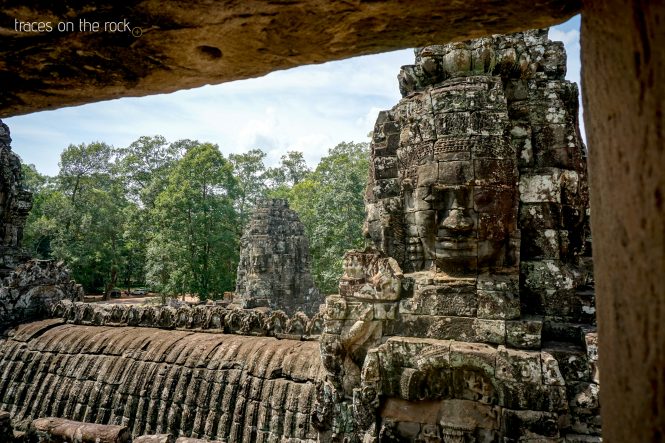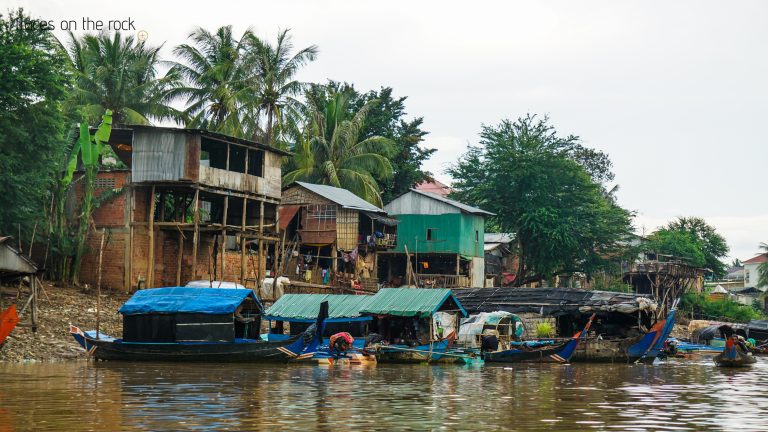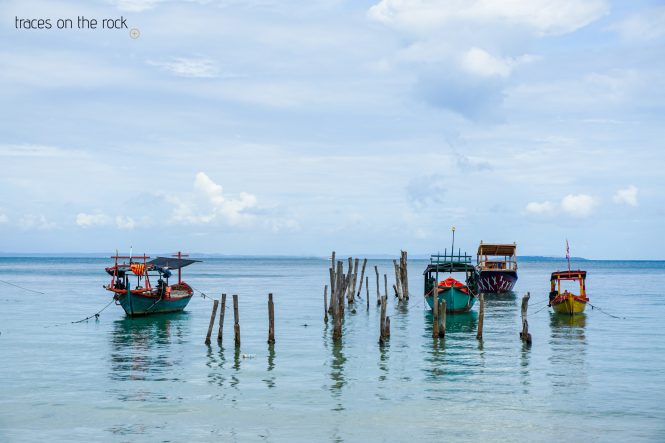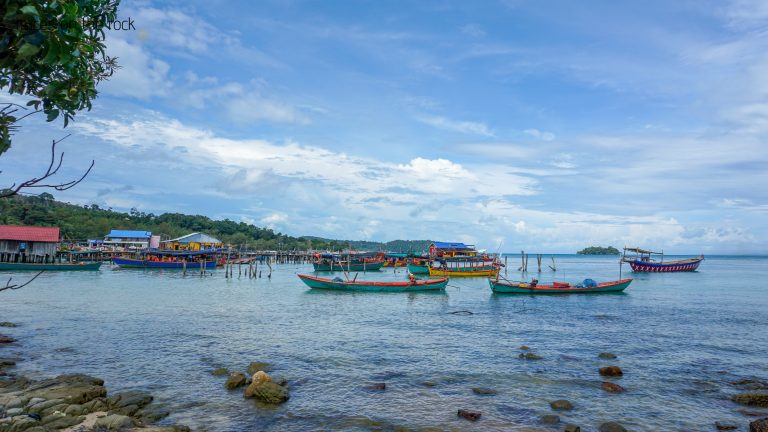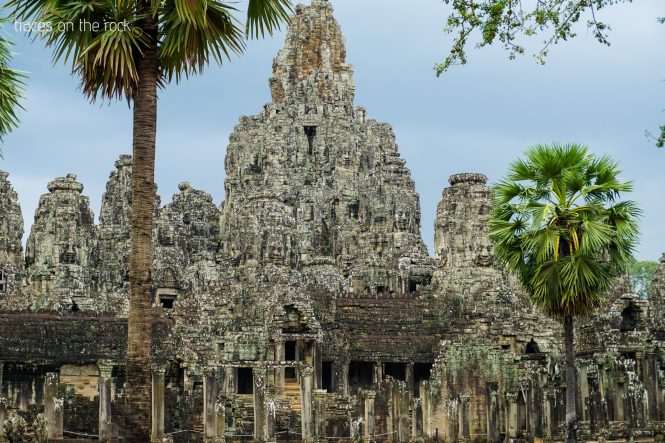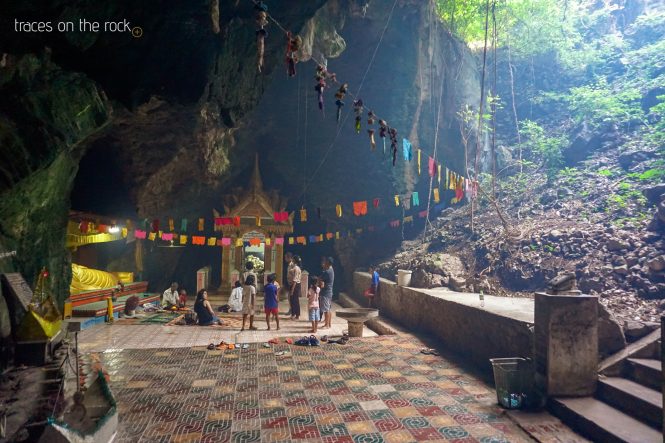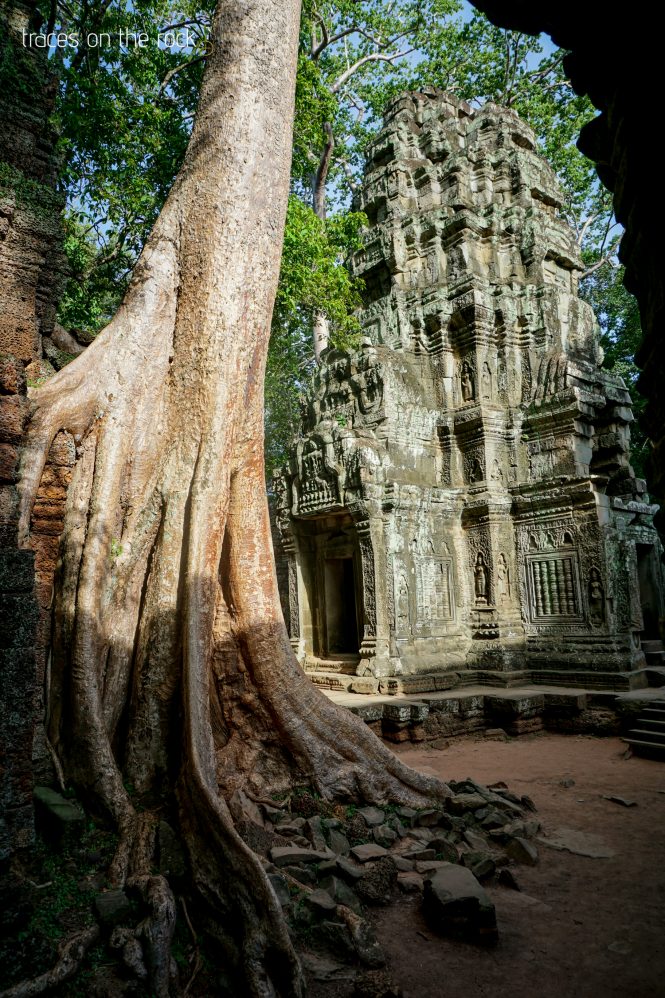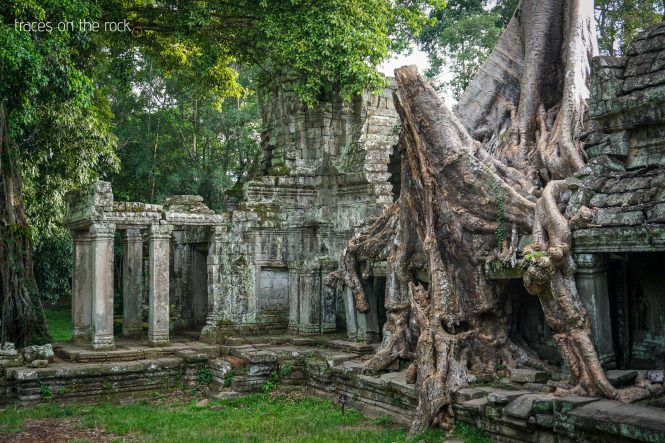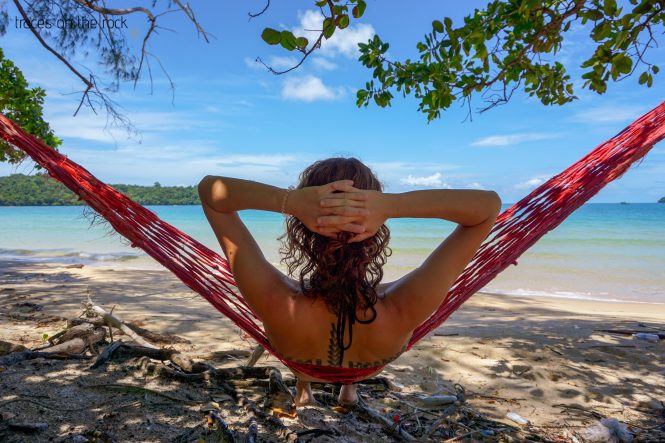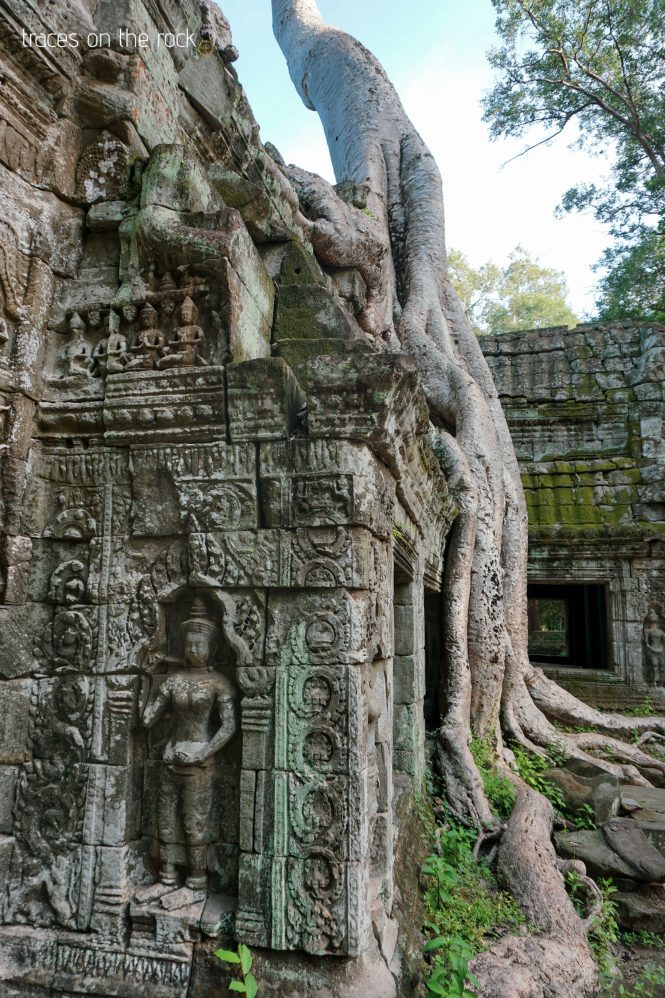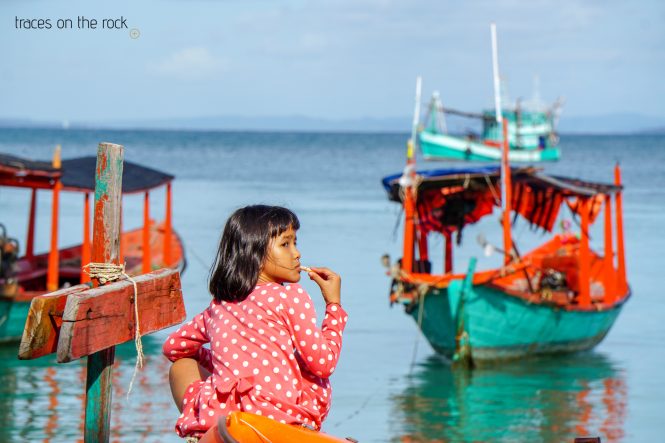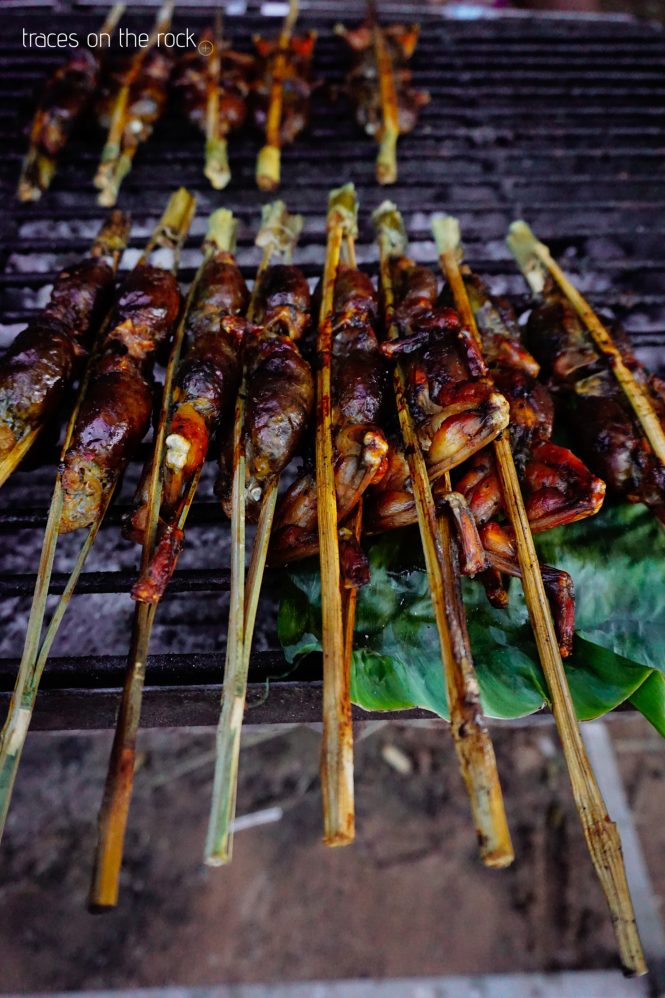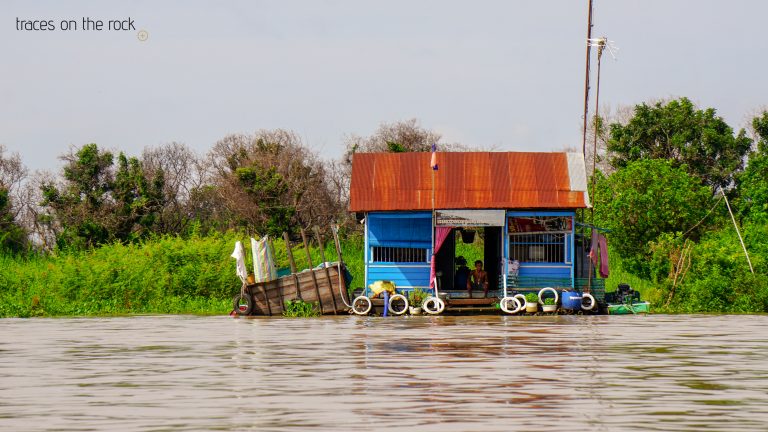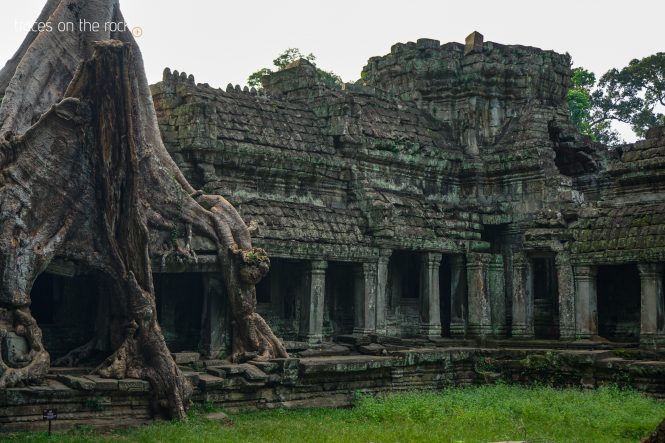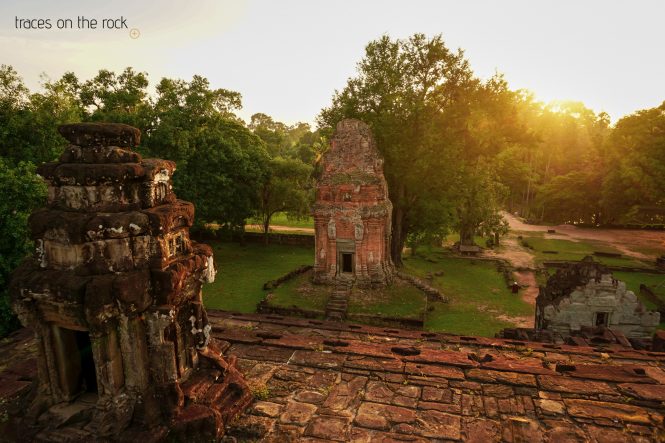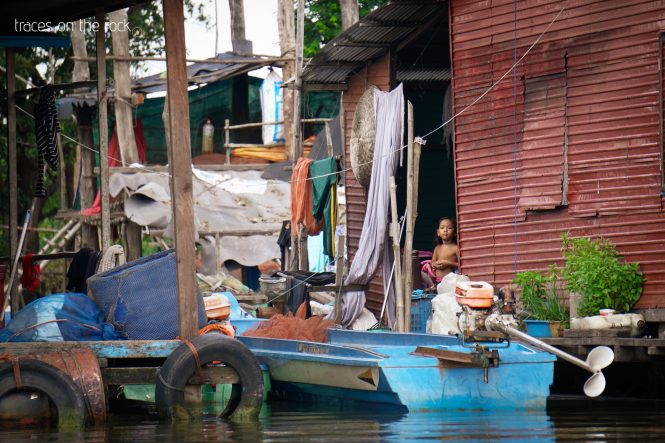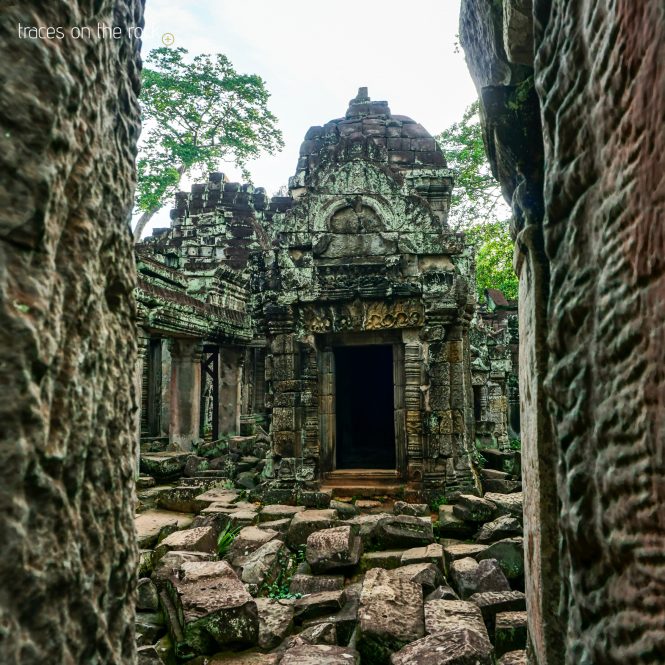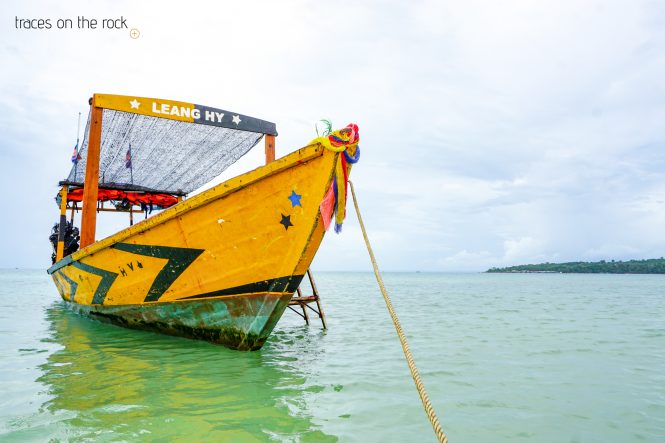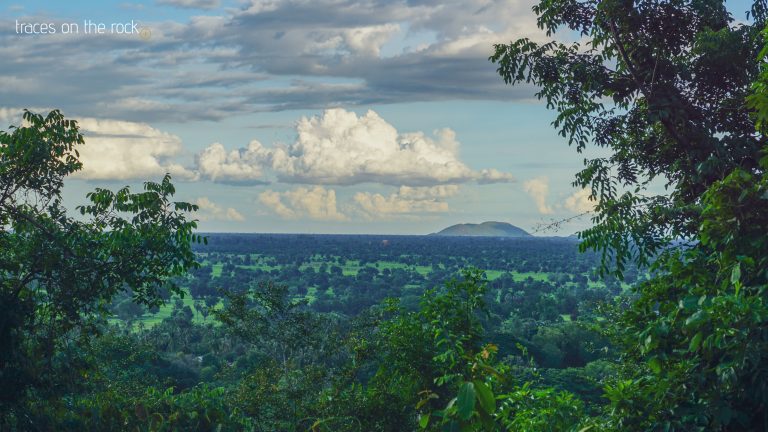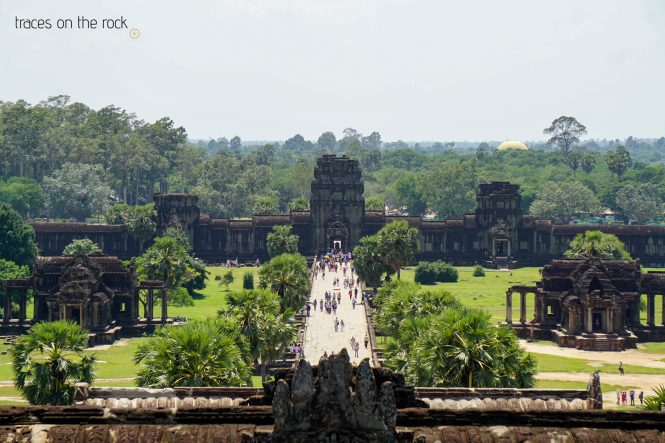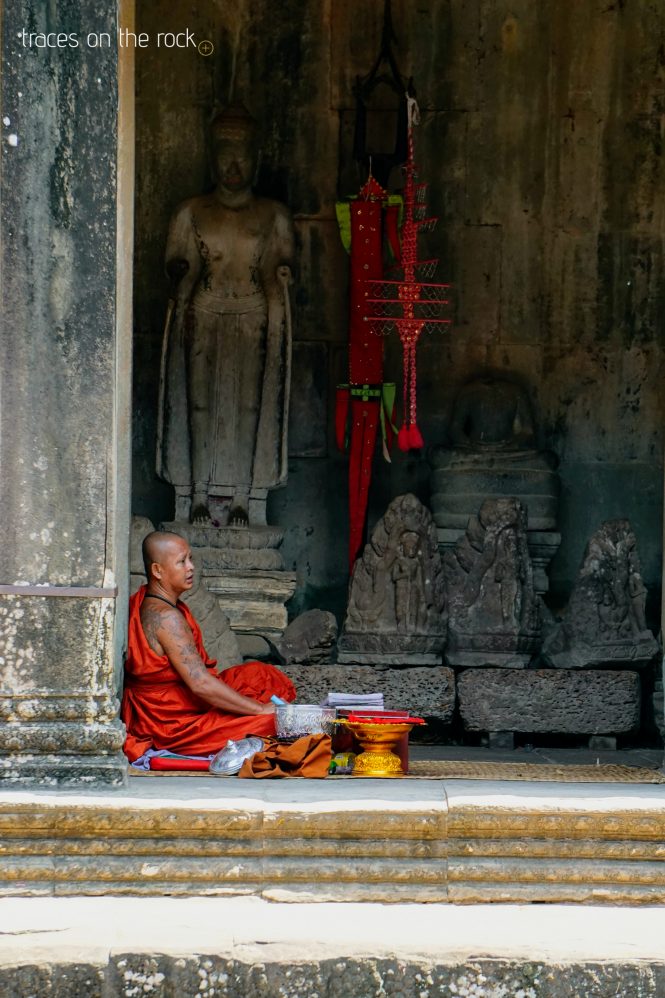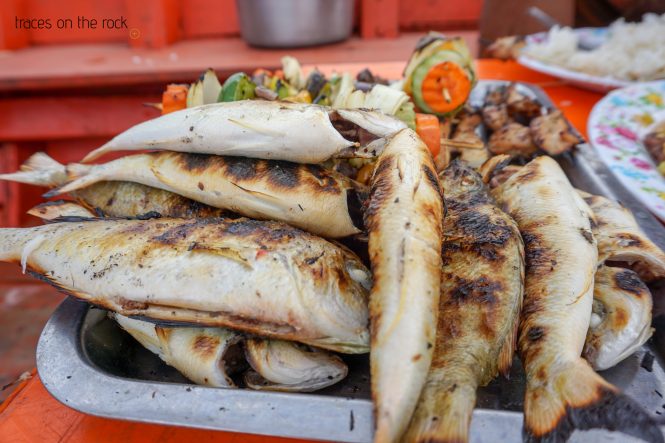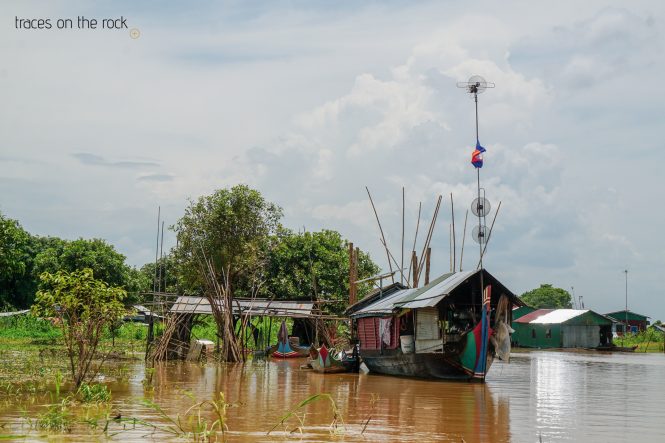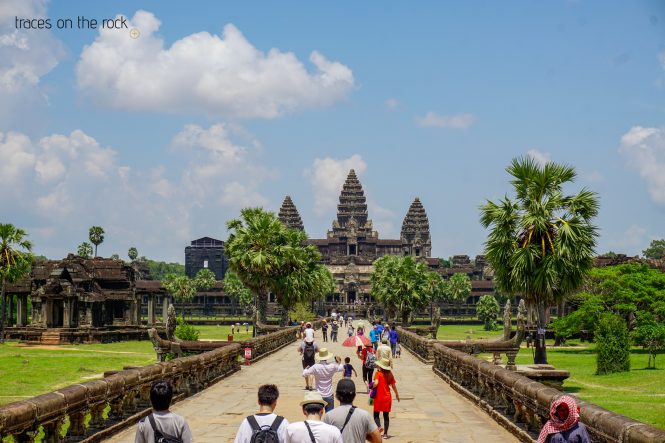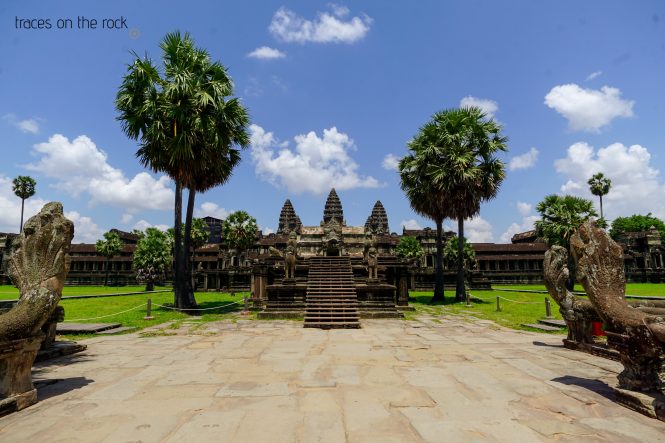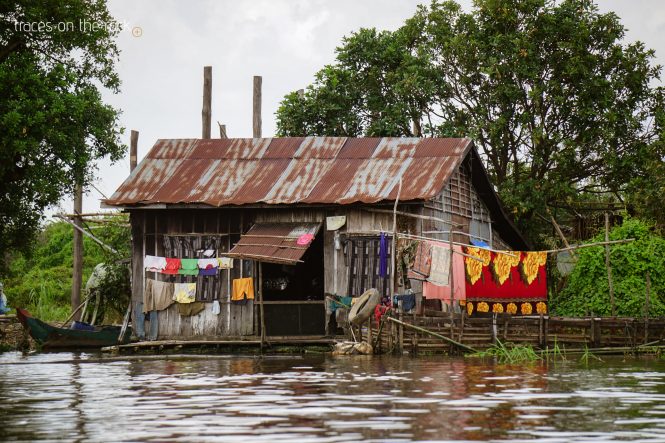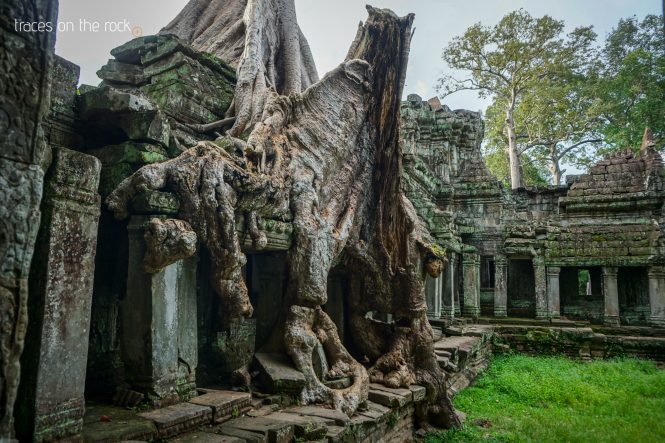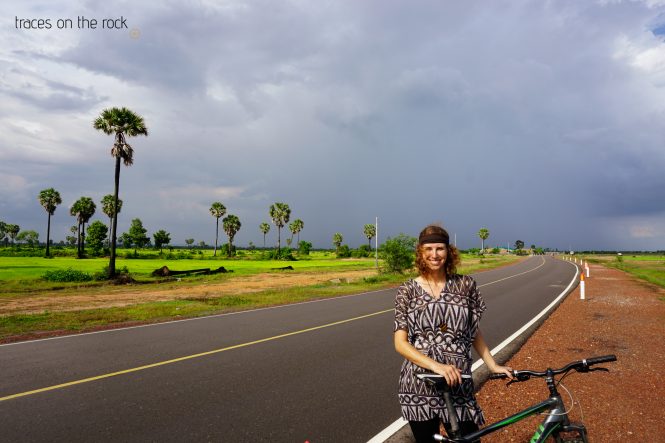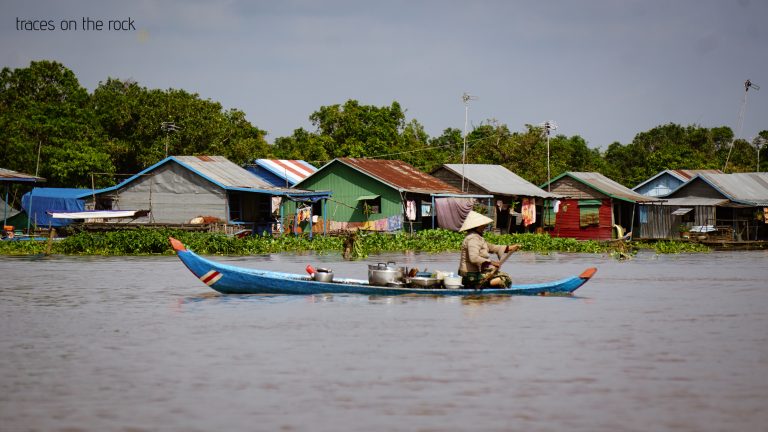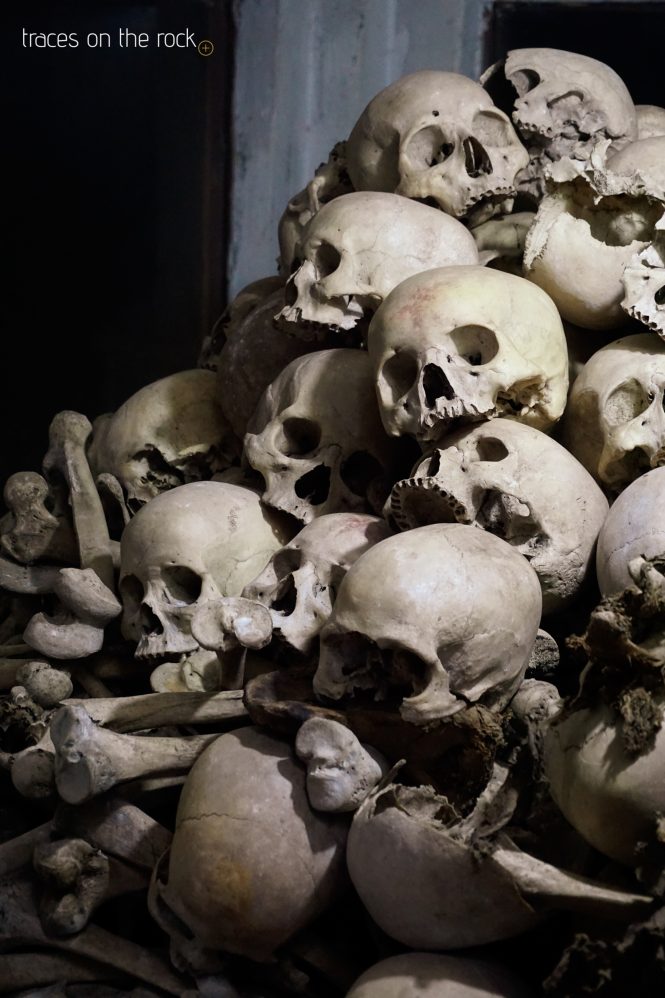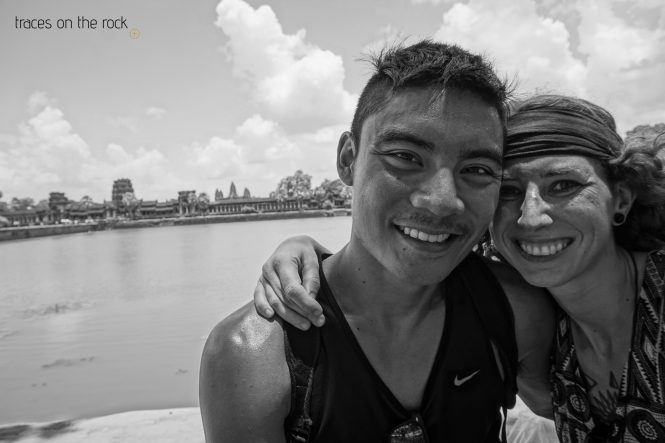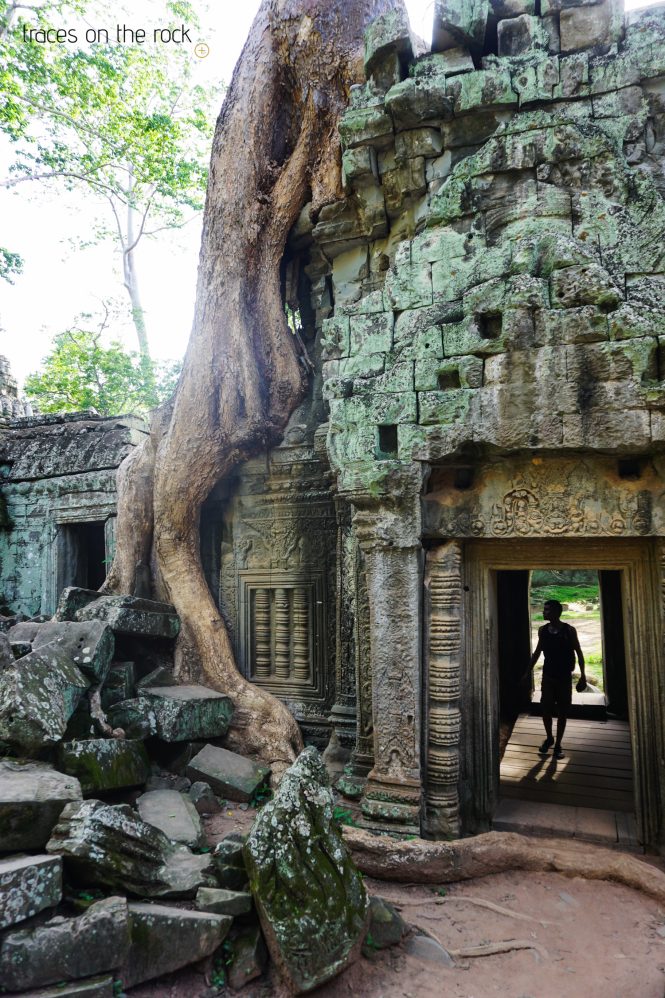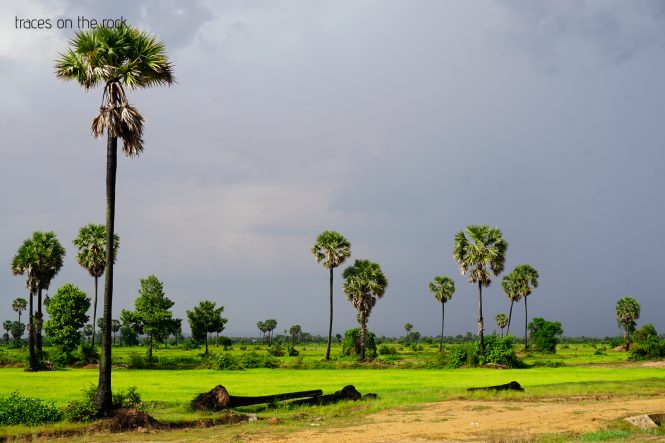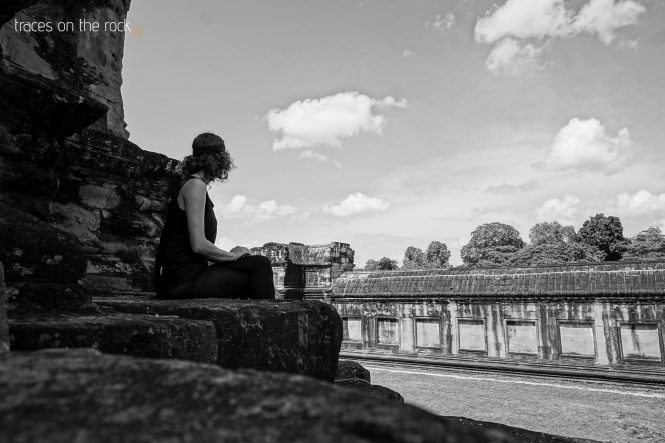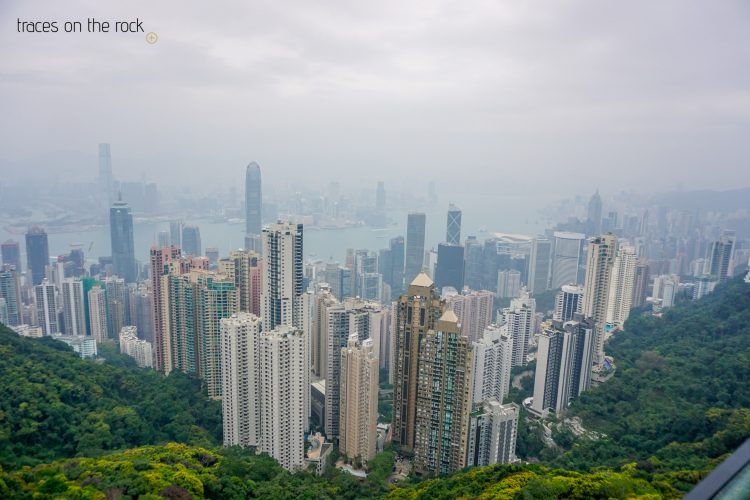The dilapidated Khmer empire
Monkeys were springing and spluttering from bough to bough ; and, on a piece of open ground, some peacocks were displaying, in the height of vain-glory; their superb plumage. The forests were of an entirely different character from the American forests. I did not see a single pine, live-oak, sequoia, or cypress ; but, instead, the teak, the ironwood, the banyan, and a multitude of flowering and fruit-bearing trees. The cocoa-nut, or palm, is not found in the centre of the forest. Magnolias of various species, and the large tree-jasmine, were plentiful. […] Entranced by the novelities and the beauties all around me, which filled my senses to overflowing with sweet sounds, delicious odors, and lovely coloring, I submitted with indifference to Andreas’s announcement that I could go no further on my pony, and must now descend and walk. I made a few steps after him, mechanically, inspecting a flower I had just culled, when, raising my eyes, I was almost paralyzed at beholding the full glory of the temple of Angkor Wat displayed before me.
Lady Hester Stanhope, “A Journey in a Junk” in The Overland Monthly, Vol. 10., 1873
Angkor Wat, the city of temples, is a place for explorers. Now there are roads to the temples which are spread over an area of 160 hectares. But in the past, visiting the temples was an adventure in which adventurers had to fight their way through the dense forest. The first reports of the city of temples are from the Portuguese capuchin monk Antonio da Magdelena from 1585, who told his compatriot, the historian Diogo do Couto, about his discovery in the jungles of Siam (Thailand was known until 1939 as Siam and included large parts of present-day Thailand, Cambodia, Laos as well as parts of Malaysia and Myanmar until the 19th century). The historian then wrote the following lines:
Half a league from this city is a temple called Angar. It is of such extraordinary construction that it is not possible to describe it with a pen, particularly since it is like no other building in the world. It has towers and decoration and all the refinements which the human genius can conceive of. There are many smaller towers of similar style, in the same stone, which are gilded. The temple is surrounded by a moat, and access is by a single bridge, protected by two stone tigers so grandand fearsome as to strike terror into the visitor.
Translated by Charles F.W. Highham (The Origins of the Civilisation of Angkor)
All the reports had one thing in common. At the time of the discoveries, the temples were abandoned. To date, only one record gives information on how life was during the Khmer empire. Chinese Zhou Daguan was part of a diplomatic delegation that visited the Kingdom of Khmer in 1295. He stayed for about a year and wrote about the daily life of the Khmer, the customs and habits of the population and the nobility. These scriptures and the pictures and engravings on the walls of the temples are the only survivals of that time. Part of his notes have been lost over time. The first translation into French was done by Paul Pelliot. According to Daguan, the Khmer have made records on parchment and palm leaves, but none have been discovered to date. Presumably they have been destroyed by moisture, rain and war.
Even today, some temples hide in dense forest. Piece by piece, nature has conquered its space back. Single trees bury whole walls, roofs and vaults below. They are enthroned and celebrating their victory over civilization. Some of the trees are still alive; others have already been sawn off and only their roots and part of the tree trunk can still be seen. With an unimaginable weight, they must have stayed on the walls and brought them down. The once shining rock is now gray and overgrown with moss. The area is angled. It’s like a labyrinth with all the collapsed walls. Original paths are blocked. New ways have formed. Now and then I have to climb over big blocks of stone. It is easy to lose your orientation. It seems like the perfect place to play as a kid because there are so many places to hide. Angkor Wat has something magical. But you have to take your time, leave the usual tourist trails and drift, give yourself the chance to get lost. For three days I was cycling with Armando through the huge facility and its surroundings. However, in advance, we visited the Museum of Angkor Wat and were thus able to better locate the temples and art history.
Milky seas effect on Koh Rong
But Cambodia had more highlights for us. With direct access to the sea, the country has countless islands. We drove to the island of Koh Rong and found ourselves in the backdrop of a pirate movie. Gleaming white sandy beaches and azure waters contrasted with the two-storey bars, restaurants, and shelters that were made of wood, and seemed temporary. Every moment I expected a pirate staggering out from one of the bars. Instead, the the foreign visitors who sought seclusion, sandy beaches and supposed untouched natural landscapes in Koh Rong were staggering around. A short distance from the harbor, numerous resorts lined up and offered more peace. Our bungalow was away from the hustle and bustle and allowed us to relax from the hectic mainland and the local bar area.
But Koh Rong was known for another thing that will forever be buried in my memory. Off the coast of Koh Rong floats fluorescent plankton. The milky sea effect or bioluminescence is a tourist attraction. At night countless boats with tourists go out to the sea for snorkeling. We as well! The amusing thing was the fact that we were sitting in the boat with a group of Asians who are known not to be able to swim. Same in our case. So we swam alone in the pitch-black water and activated the bioluminescence of the plankton through our movements in the water. Through the diving mask you could follow the water games with the bright little animals up close. Light streamed around our arms and legs. It was overwhelming. I felt like a painter who is painting with light instead of colors. That evening, we also noticed that the boat anchored off the coast of our bungalow complex. That same night we searched the beach for a spot where it was dark enough to see the bioluminescence plankton. We found a spot and swam with the plankton each night.
The long shadow of the Khmer Rouge
My conclusion for Cambodia is nevertheless mixed. I will associate priceless and beautiful memories with Angkor Wat and Koh Rong. Nevertheless, I leave the country with a sense of relief. Cambodia is unlike any other countries I’ve seen. I lacked the charm that Thailand, Indonesia or India held. I missed the culture in the everyday image that I was used to from Thailand, Indonesia or India. And this is exactly where the cold and gruesome work of the Khmer Rouge appears. Once a culturally rich country, the culture and the people still suffer today from the atrocities that ended in genocide. Under the leadership of Pol Pot, an estimate of two million Cambodians lost their lives under the terror regime between 1975-1979. Exact numbers do not exist. With the invasion of Vietnamese troops, the rule of the Khmer Rouge ended, but not their existence. Partially, the followers fled to Thailand. The Khmer Rouge supporters continued to fight guerrilla operations against the Vietnamese occupation and the newly established government. In the mid-90s, the Khmer Rouge were as good as dissolved. In 1999, the remaining members surrendered. The consequences of the regime and the genocide can be felt till today. Countless cultural assets have been irrevocably destroyed. The loss of artists, writers, scientists or intellectuals shapes the country to this day. The reconstruction of the country and the emergence of the arts is progressing slowly. There are still areas that are closed due to landmines. Tourism is one of the main sources of income for the country. Unfortunately, I notice that in my wallet too. Food, accommodation and transportation are more expensive than in other Southeast Asian countries. Therefore, after three weeks we will travel back to Thailand, where I will participate in a course in traditional Thai massage.


